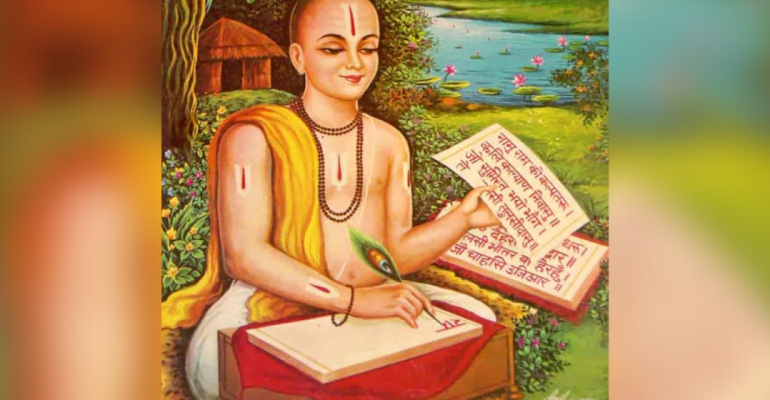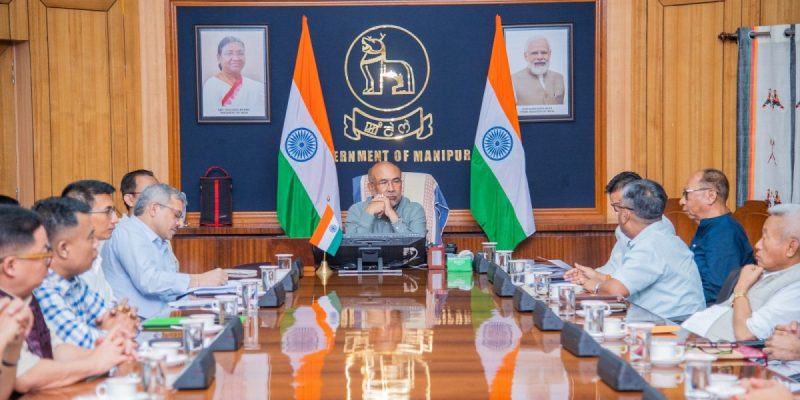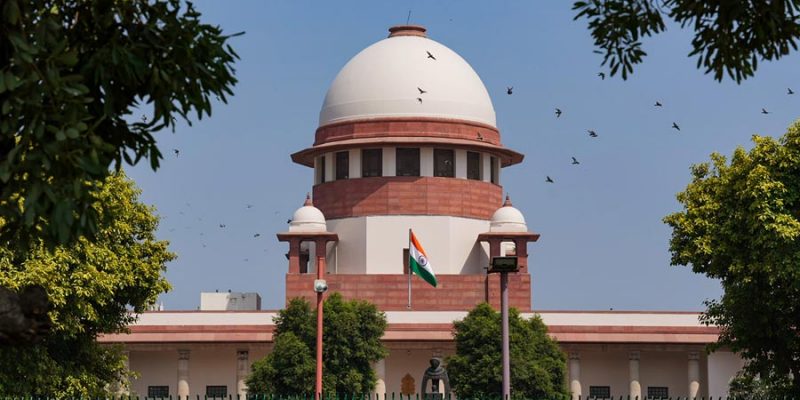The Row Over Ramcharitmanas Is Not New. Even Gandhi, Vivekananda Were Outraged by Some Verses.

Tulsidas’s Ramcharitmanas, composed in Avadhi in the 16th century, occupies an exalted place as a non-Sanskrit and pre-modern text in folklore and in the spiritual and religious domain of the entire Hindi heartland.
Centered around Lord Ram’s account, and given his elevated status in mythology, it has commanded people’s devotion and reverence for centuries. The text is deeply embedded in people’s consciousness as sacred and holy. Western scholars such as Phillip Lutgendorf have translated it into English. Its couplets are frequently quoted, but several of them have also been severely criticised for projecting women and people at the bottom of the caste hierarchy with indignity.
Controversial couplets
Let us see the contents of some of these couplets, which are self-explanatory.
A portion of the couplet “Je Varnadhama Teli, Kumbhara; Swapach, kirat, kol, Kalwara….” forms part of the Uttar Kanda section of Ramcharitmanas and its rough translation in English would be that Teli, Kumbhara, Swapach, Kirat, Kol, Kalwar, among others are inferior in the Varna stratification of the Hindu society. This is because of their placement at the lower rung of the caste hierarchy, which was described by B.R. Ambedkar as “..representing an ascending order of reverence and descending order of contempt”.
Teli is a caste categorised among Other Backward Classes (OBC). They are into their traditional occupation of extracting oil by crushing oilseeds. People of the Kumbhar caste are potters, who earn their livelihood by making earthen pots. They fall under the OBC category in the northern part of India. Like Teli and Kumbhar castes, Swapach and Kalwara castes also fall under OBC category, and are even categorised among the most backward classes even among OBCs. Kirat and Kol in the couplet refer to two different tribes.
In the Uttar Kanda, Tulisidas composed another couplet, “Adham Jati mein Vidya Pae; Bhayau Jatha Ahi Dudh Piyae.” The translation of its essence would be, “Educating people of inferior castes will make them more poisonous in the manner in which feeding a poisonous snake with milk, enhances its poison”.
Again, in Uttar Kanda, the couplet, “Mahabrushti chali futi kiyari; jimi swtantra bhaye bigarahi Nari” when roughly translated into English means “just as excessive rain breaks the barriers of the agricultural fields, the freedom for a woman can violate her dignity”, clearly indicating the way in which women are portrayed in some couplets of Ramcharitmans.
In Aranya Kanda, there is a couplet: “Sapata, Tadata Parusa Kahanta, Bipra Pujya Asa Gavahim Santa; Pujiya Bipra Sil Guna Hina; Shudra na Guna Gana Gyan Prabina.” Its core meaning is “a Brahmin even though he curses you, beats you or speaks harsh words is still worthy of adoration”. It also says, “Adore a Brahmin even if he is deficient in quality, decency and knowledge, but not a Shudra who might be learned, knowledgeable and sharp.”
In the Sunder Kanda of Ramcharitmans “Dhol, Gawanr, Shudra, Pashu Nari; Ye sab he Tadan ki Adhikar” when rendered to English reads as follows: “Drums, boors, shudras, animals and women, all are fit to be beaten.”
A plain reading of these couplets convinces that their contents denigrate women and those placed at the bottom of caste stratification and outside caste hierarchy.
The BJP’s rivals hope that by exposing the offensive couplets, OBCs could be won over from the fold of Hindutva, as a sizeable number of them now support the Bharatiya Janata Party (BJP). The Opposition hopes that the row over Ramcharitmanas kicked up by the BJP would help it to expand its electoral base.
Also read: Bhagwat’s New Spin on Caste Will Not Stem the Rebellion Against Texts That Insult the Shudras
Histroy of criticism against Ramcharitmanas
The criticism of the controversial couplets from Ramcharitmanas is nothing new.
Ramswaroop Verma, former finance minister of Uttar Pradesh and founder of Arjak Sangh in the late 1960s and Shoshit Samaj Dal in the 1970s (Party of Exploited Sections of Society), called for burning copies of Manusmriti and Ramcharitmanas on Dr. B R Ambedkar’s birth anniversary on April 14, 1978, to protest against their content.
Earlier, in 1974, an MLA of the Uttar Pradesh Assembly, Rampal Singh, tore the pages of Ramcharitmanas inside the House. In the 1980s, Kanshi Ram and Mayawati of the Bahujan Samaj Party condemned Manusmriti and other texts that are an affront to people of particular caste groups, the Bahujan.
During the past several months some influential and prominent political leaders of OBC communities from Bihar and Uttar Pradesh have again targeted those couplets. For instance, the education minister of Bihar, Chandra Shekhar, said that the couplets of the Ramcharitmanas are disrespectful to women, Dalits, and Shudras. His criticism gained traction both in Bihar and beyond.
In Uttar Pradesh, Samajwadi Party leader Swami Prasad Maurya stridently and repeatedly raised his voice in several public platforms in his state and in Delhi against those couplets. He also wrote a letter to Prime Minister Narendra Modi appealing for their removal from Ramcharitmanas as they are incompatible with the ideals of equality, dignity, and fraternity enshrined in the preamble of the Constitution.
Also read: Ramcharitramanas Uses ‘Objectionable Language’ Against Dalits, Adivasis, OBCs: Swami Prasad Maurya
While doing so, these leaders have maintained that they have reverence for Lord Ram and only pointed out the portions assailing the dignity of people in the name of caste and gender. However, the chief minister of Uttar Pradesh, Yogi Adityanath, gave a different spin on the criticism of Ramcharitmanas by opposition leaders, for he said such criticism amounts to an assault on Hinduism itself. He went ahead and read out some of those controversial couplets from the Ramcharitmanas, both in the Uttar Pradesh Assembly and outside. Adityanath’s endorsement of the controversial couplets triggered the latest controversy.

Uttar Pradesh chief minister Yogi Adityanath. Photo: PTI
Gandhi and Vivekananda’s critique
Adityanath would not have even spared M.K. Gandhi, one of the shining examples of an ideal Hindu and a devotee of Lord Ram. In 1917, Gandhi criticised one of the controversial couplets – “Drums, boors, Shudras, animals, and women, all are fit to be beaten”. Delivering a speech at Second Gujarat Educational Conference, on October 20 that year, Gandhi said such couplets perpetuated an inferior status of women in society, asserting that some such provisions in old Sanskrit texts contributed to devaluation of their .
It is noteworthy that while condemning the said couplet, he took pride in calling himself a devotee of Tulsidas. At the same time, however, he clarified that he was not blinded by his devotion of Tulsidas. Gandhi, blaming several other Sanskrit texts for treating women in an insulting manner, asked people to shun the false notion that everything expressed in the Sanskrit language was what he called “scriptural precept”. He then firmly asserted that “we must fight this impression and pluck out from its very root the general habit of regarding women as inferior beings”.
Also read: UP: On Backfoot Over Caste Census, Does Tulsidas Couplet Row Allow Yogi to Change the Conversation?
Much before Gandhi, Swami Vivekananda in his speech “The Future of India”, forming part of his book, Lectures from Colombo to Almora, said with anguish that scriptures prescribed harsh penal measures to keep Shudras away from spiritual knowledge. Referring to the portions of Manusmriti – in particular, referring to “If the Shudra hears the Vedas, fill his ears with molten lead, and if he remembers a line, cut his tongue out” – he expressed his anguish over treatment of Shudras.
In his article “Modern India” written in 1899 and published in volume 4 of the Complete Works of Swami Vivekananda, he sensitively asked, “And where are they (Shudras) through whose physical labour only are possible the influence of the Brahmin, the prowess of the Kshatriya, and the fortune of the Vaishya?” Proceeding further, he put the question, “What is their history, who, being the real body of society, are designated at all times in all countries as ‘baseborn’?”
Painfully, he described Shudras as “moving corpses” of India and the “beasts of burden”, and searchingly asked, “…what is their lot in life?” Shudras are sometimes mistaken to mean Dalits. But, it actually refers to the whole spectrum of people who use their hands to work, this means the entire population, minus the top three Varnas and would include all OBCs and all working-class people.
Vivekananda then went on to presciently observe, “Yet, a time will come when there will be the rising of the Shudra class, with their Shudra-hood..” His utterances that they would become great and assume supremacy not by “acquiring the characteristic qualities of the Vaishya or the Kshatriya” but “with their inborn Shudra nature and habits” sounds so contemporary. His sensitive observations that socialism would herald such a social revolution assume critical relevance for our time.
Gandhi’s and Vivekananda’s above remarks, in fact, are coming true, with rising consciousness among ‘lower castes’ for equality, equal opportunity, and fraternity. Sadly, these ideals are facing an unprecedented assault in India today, due to the growing tide of majoritarianism, described aptly by Ramchandra Guha as “unforgiving and unapologetic”. We must also unforgivingly and unapologetically continue to make our case.







